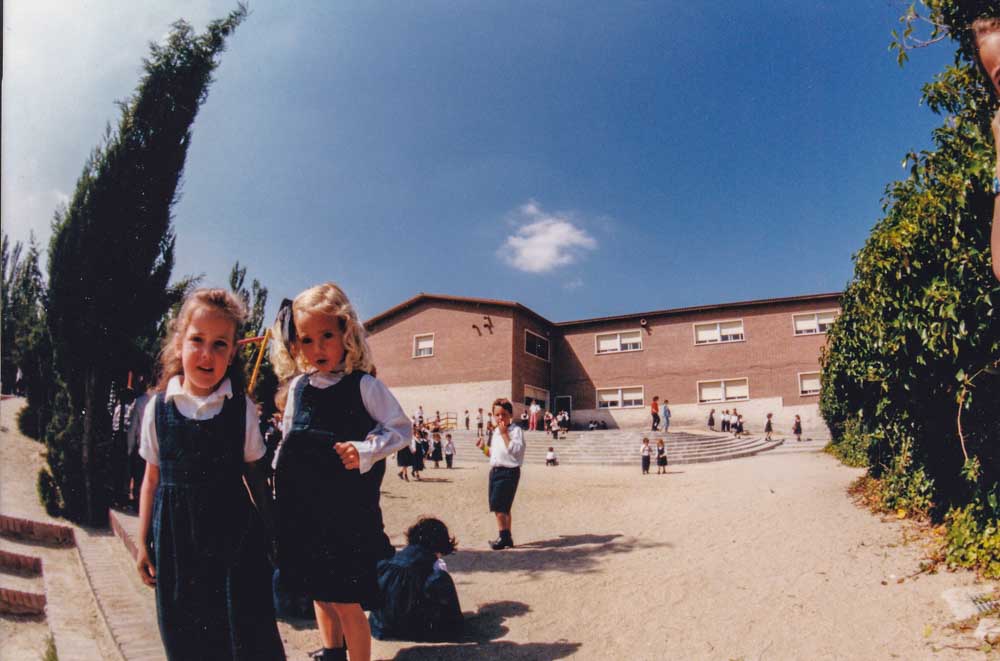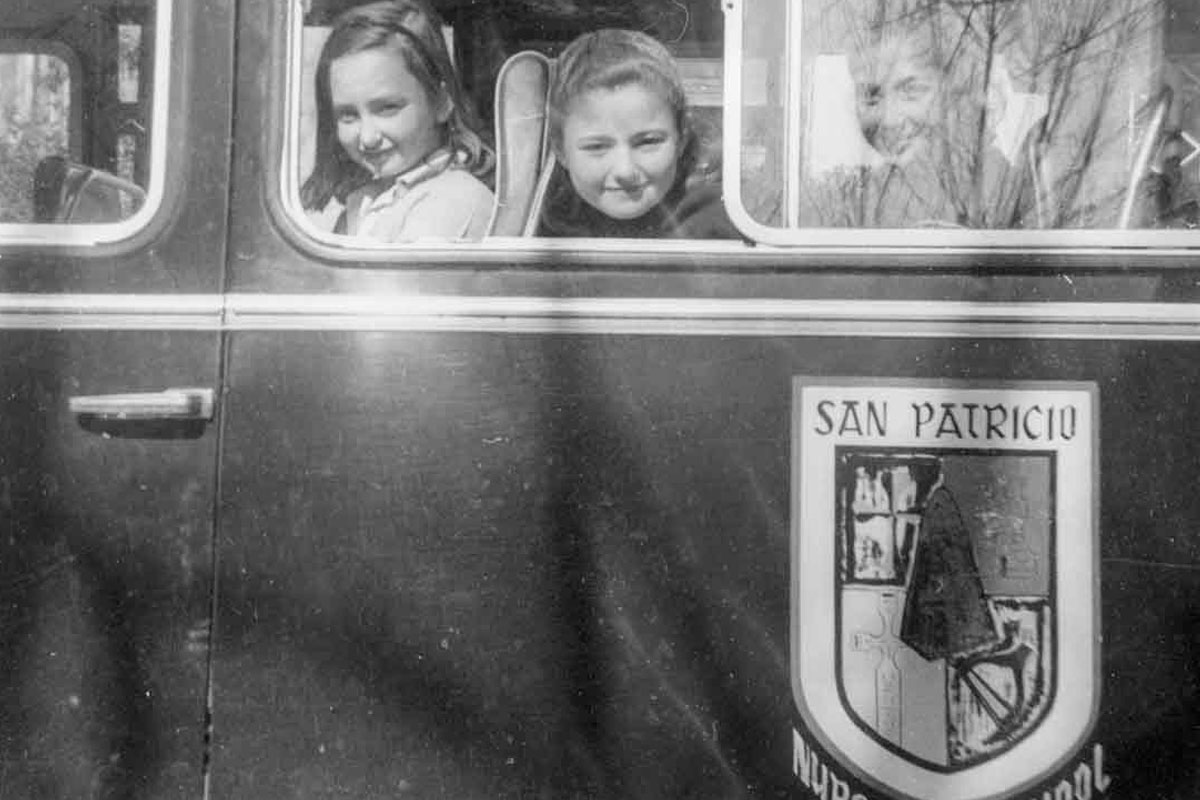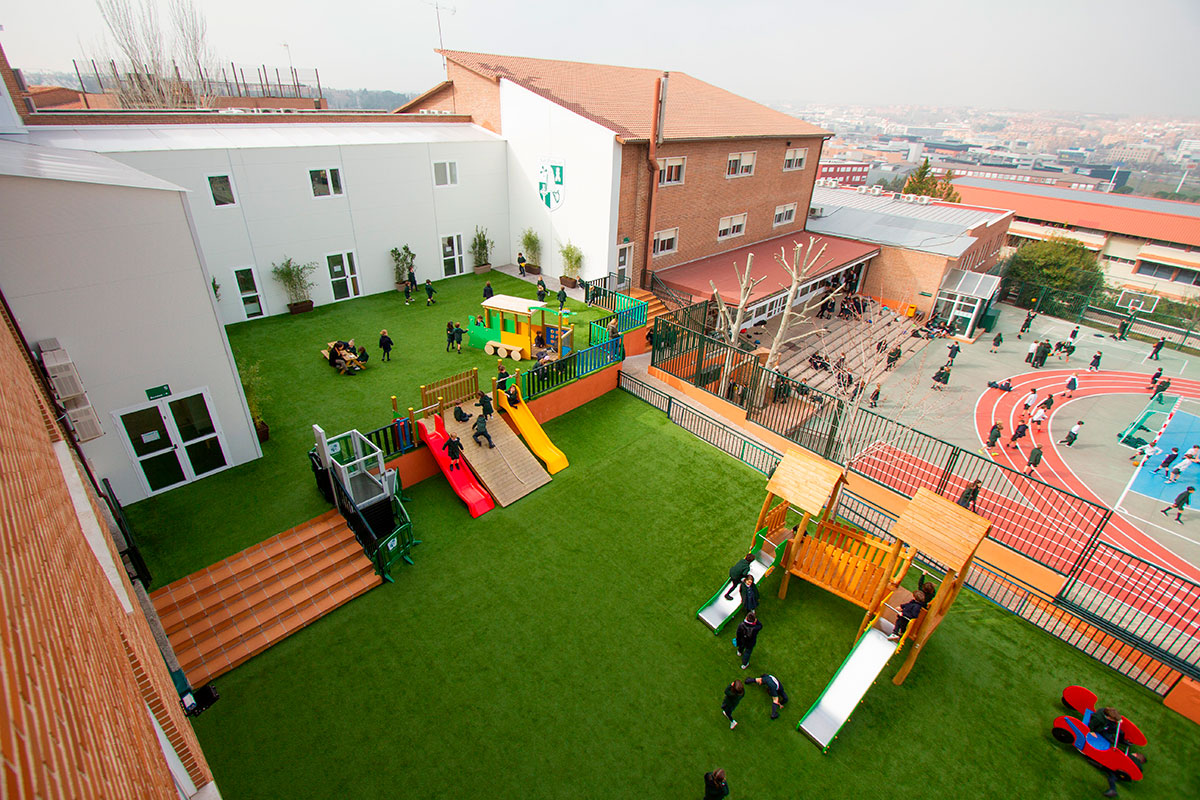ABOUT US
With three campuses in Madrid: Serrano, La Moraleja, and El Soto de la Moraleja, an International Boarding School in Toledo and an Arts Center offering classes in Music, Dance, Visual and Plastic Arts and Dramatic Art, San Patricio has established itself as one of the leading educational groups in Spain.
Since its foundation in 1958, San Patricio has strived to provide the very best for every student and for the community, committing to the following values: Christian humanism, universal Human Rights and in the principles of democratic coexistence, tolerance, respect and civic citizenship.
ORIGIN AND HISTORY
The beginning – Serrano
San Patricio was first opened in 1958, on 200 Serrano Street in Madrid, as an officially recognised Teaching Centre, under the Education Act of 1953, amended in 1957. Its founders were four dynamic and enterprising people who, with courage and vision for the future, were ahead of their time: Ms Luisa Murias, Ms Luz Murias, Mr Jaime Marugán and Mr Gabriel Castellano. Each with their own passionate views on education, they were united in their ultimate goals and left a clear impression on the school from the beginning. As the first Governing Board of San Patricio, they left outstanding examples and enduring spirit for all who followed.
An open school, with an avant-garde ethos and Anglo-Saxon approach, it was created based on three main guidelines: being a Catholic school, having low student/teacher ratios, and providing English language lessons from an early age. The combination of the first and last of these three characteristics is the fundamental reason for the Irish connotation in the school’s name.
The idea of carrying out mixed teaching based on Christian values, with a clearly customised approach and focus on immersion in the English language and culture, attracted so much attention that San Patricio quickly grew and firmly established a positive reputation. The reputation was not solely due to the innovative and atypical approach for that time; it was also thanks to the outstanding work of the management and highly motivated teaching team, as well as the satisfaction of the first families who, firmly believing in the project, entrusted their children’s education to San Patricio.
The English terms “Nursery” (pre-school) and “School” (primary education) were used from the outset, along with the English half-day schedule for the youngest children. The teaching team were native Irish teachers. Examinations in the 4th and 6th grades, which were part of the study plans at the time, granted students the titles of High School Graduate and Senior High School Graduate, respectively, and provided access to the pre-university course (the “Preu”) and to the subsequent test, as prerequisites for their transition to university. In June 1967, following brilliant results in the 6th-grade examination, the 1960-1961 cohort prepared their entrance examination for the Baccalaureate, saying goodbye to the school. This was the first group of students to have concluded their studies at San Patricio, and the only one to complete the entire Baccalaureate program in the Serrano premises.
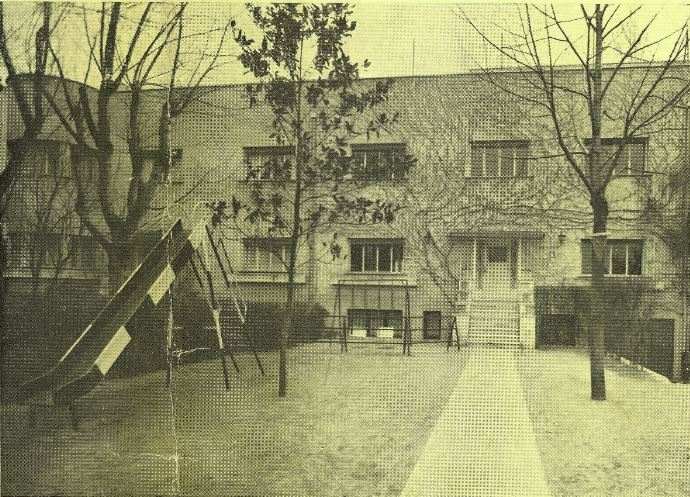
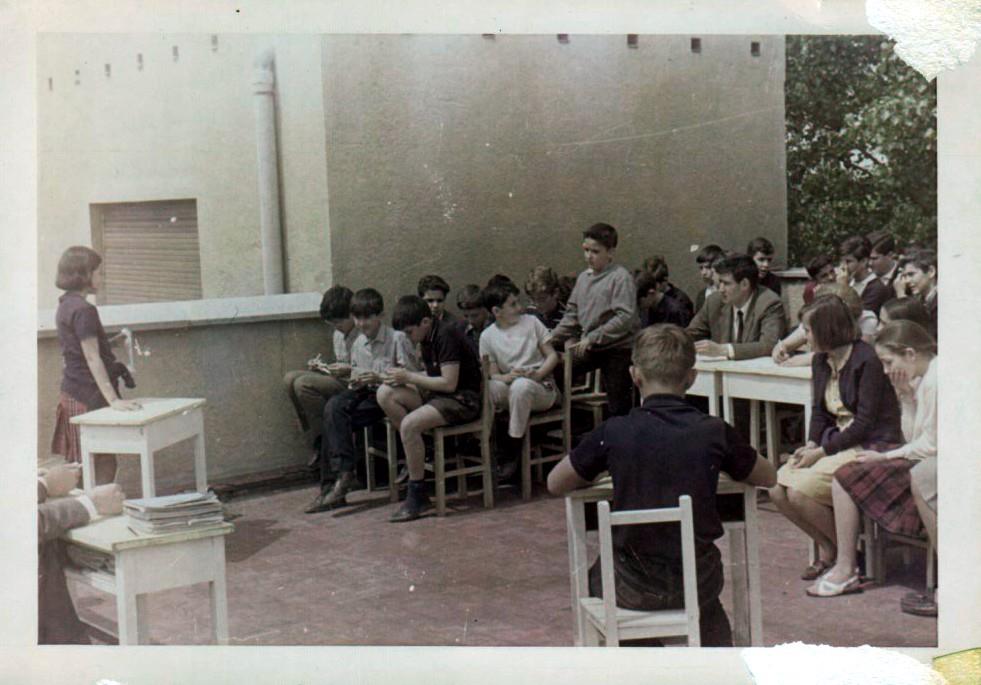
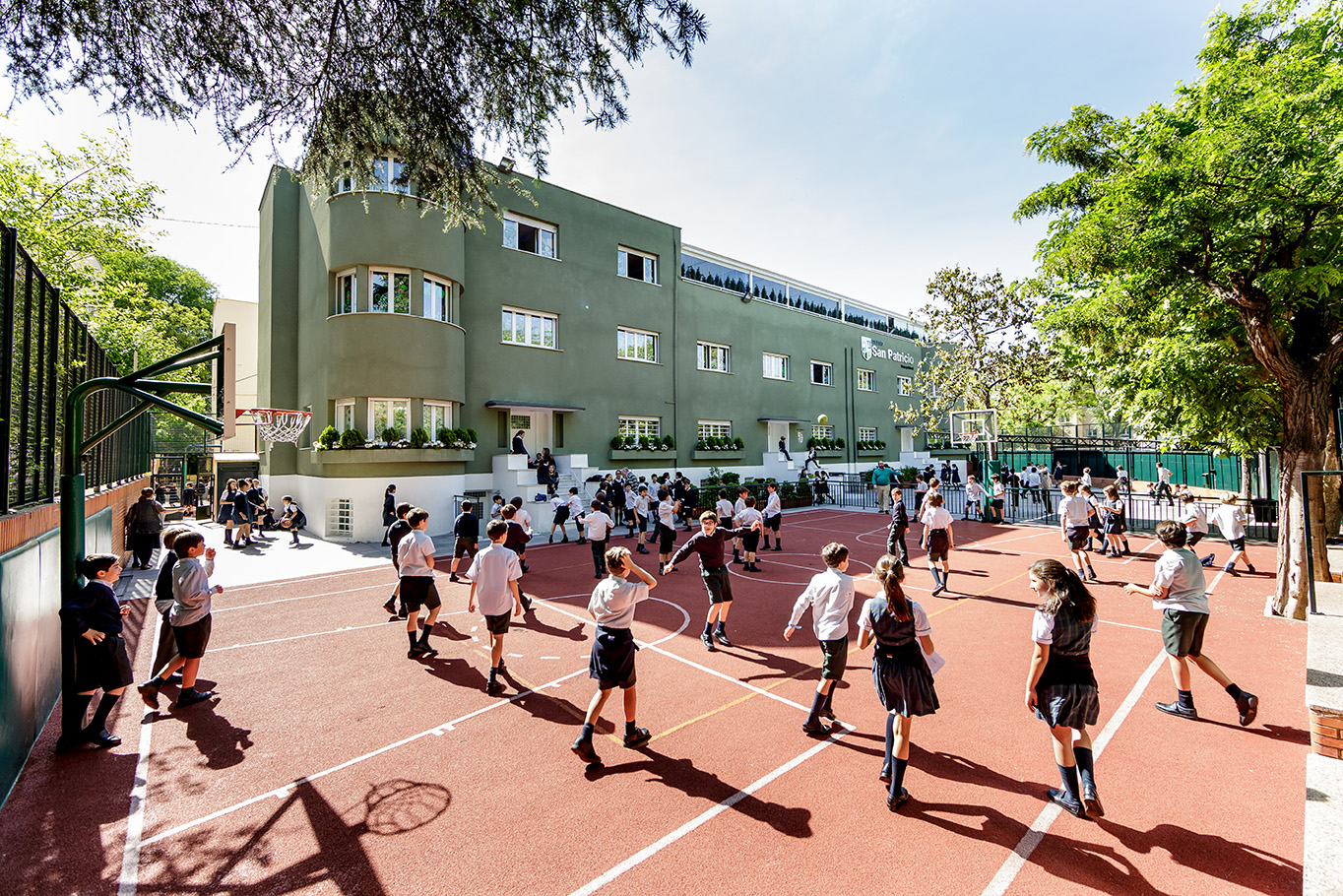
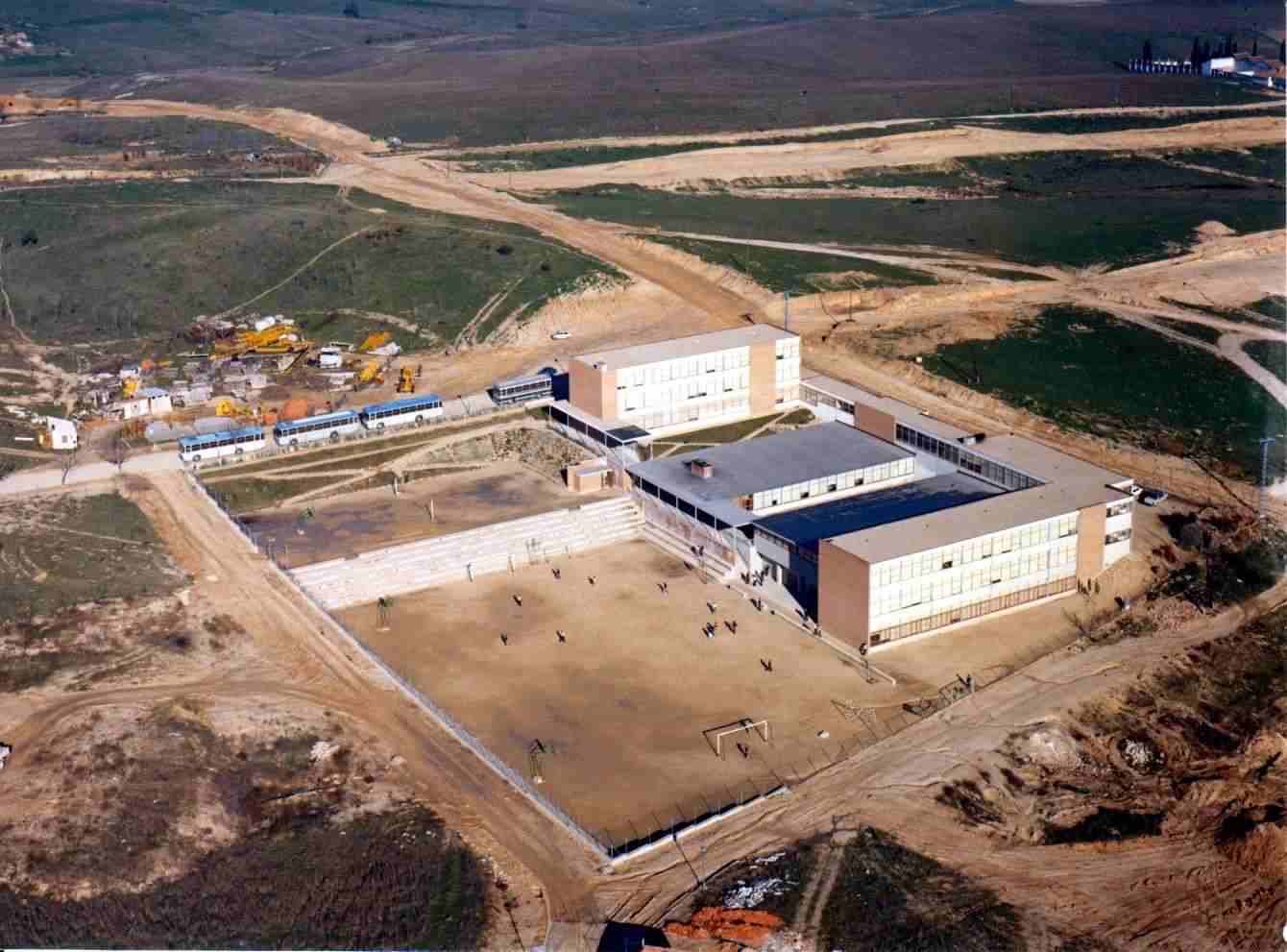
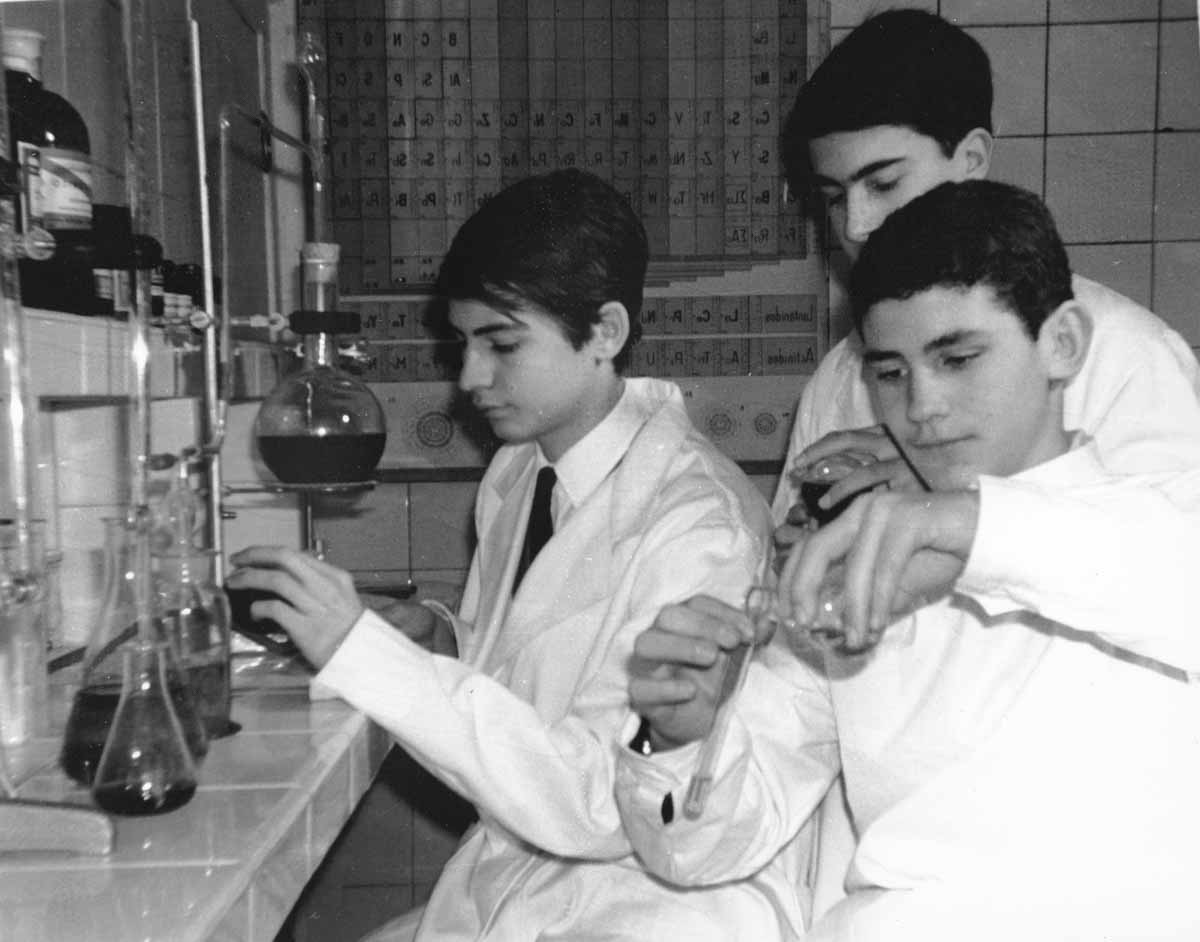
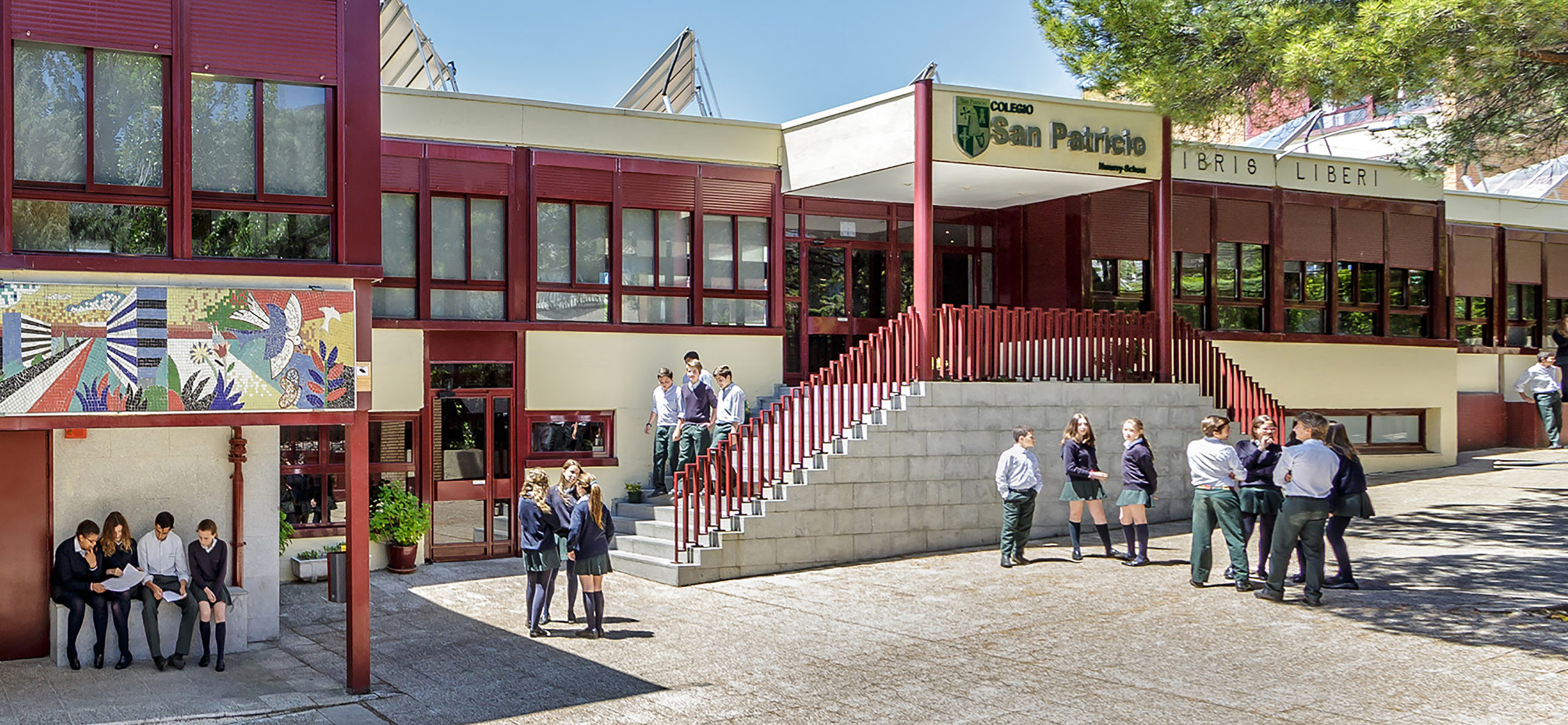
El Soto
The campus in Serrano was in high demand and could not accommodate the number of new students applying for admission. As planned, and only a few months after the first graduating class, in October 1967, San Patricio opened its new high school in El Soto de la Moraleja. It was the first school in Madrid to open its doors in this new neighbourhood. The decision was made that the Serrano campus would focus on Nursery and Primary while Secondary students would progress to the new school in El Soto.
The architecture of the new centre was designed taking into account the regulations of the Spanish Ministry of Education, who did not permit co-educational teaching. Thus, a double school was built – within the same building – with clearly defined male and female pavilions, independent class schedules, separate playgrounds and two distinct Technical Management departments.
Shortly afterwards, an educational revolution took place in Spain, and the Basic General Education (BGE) was implemented in 1970. The 4th-grade examination disappeared, along with the corresponding “Elementary Baccalaureate” title, which was replaced with “School Graduate”, which as granted to students at the end of the BGE (eight years). It was the step before the new Baccalaureate, the Unified Polyvalent Baccalaureate (the UPB). The introduction of the General Education Act forced the school to reorganise: new students and those of the first Baccalaureate year become the students of the 4th, 5th, 6th, 7th, and 8th grades of the BGE. From the class of 75-76, with the implementation of the UPB, the School generalised coeducation in all areas of school life. This innovation was not surprising for the students of San Patricio, since the school supported friendship and mutual knowledge between boys and girls since its inception, through frequent extracurricular activities programmed outside the classroom, cultural visits, excursions and through daily connection in the cafeteria, at certain “recess” times and on the school transport routes.
These were times of profound changes in Spain, both politically and socially, and undoubtedly influenced the education of teenagers who were experiencing moving to a new educational system as well as a significant political transition.
The diversity of changes in the new educational legislation proved confusing for many teachers, students and publishers, who lacked guidance on the matter. San Patricio decided to remain faithful to its pedagogical beliefs, incorporating the positive and relevant aspects of the new Law and integrating them in its personalised learning system.
La Moraleja
With urban growth, both in La Moraleja and other nearby areas, and the well-consolidated academic reputation of San Patricio, the demand for places for young students led to the creation of a new nursery centre in La Moraleja in 1983. It’s design mirrored the Serrano pre-school in terms of its operation, but with much-improved space.
Slowly, and naturally, it went from being almost a “little house” to becoming a splendid building, perfectly equipped for nursery and primary school students, from the ages of 2 to 12. Today this is the campus with the largest number of students of the three San Patricio sites. It’s opening was the perfect way to celebrate the 25th anniversary of the school’s founding, and an excellent example of the extraordinary vision and initiative of one of its founders, Mr Jaime Marugán. The structure had been completed: two schools for younger children leading to a school for older students. The children would move between purpose-built schools changing buildings but without changing classmates. Following the same philosophy that avoided mixing small children with teenagers from the outset, and providing smaller class sizes and increased support for students.
Since the class of 83-84, students have remained at the Serrano campus and in the newly created La Moraleja Centre until the end of the 5th grade of the BGE, which completes the second stage of the Basic General Education. Students then move on to the El Soto Centre to attend the BGE higher cycle (6th, 7th and 8th grades) and the three UPB courses, along with the University Orientation Course (UOC), taught at El Soto School.
In July 1984, with a mix of trepidation and confidence, the school awaited the first results of the Entrance Examinations, aware that it might have lacked experience during this first UOC course, though it did not lack determination. In the end, the results confirmed the excellent work of students and teachers with 100% of students passing the June examination. The same success was repeated in September, with magnificent final grades in both cases. This marked the beginning of an outstanding record of academic results.
